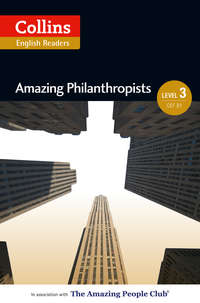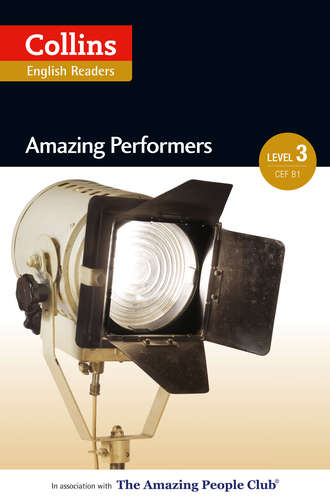
Полная версия
Amazing Performers: B1

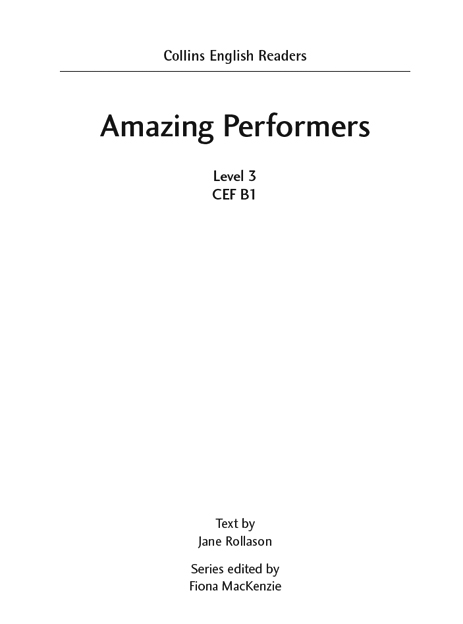


Cover
Title Page
Introduction
The Grading Scheme
Pablo Casals
Louis Armstrong
Frank Sinatra
Edith Piaf
Maria Callas
Elvis Presley
Glossary
Keep Reading
Copyright
About the Publisher


Collins Amazing People Readers are collections of short stories. Each book presents the life story of five or six people whose lives and achievements have made a difference to our world today. The stories are carefully graded to ensure that you, the reader, will both enjoy and benefit from your reading experience.
You can choose to enjoy the book from start to finish or to dip into your favourite story straight away. Each story is entirely independent.
After every story a short timeline brings together the most important events in each person’s life into one short report. The timeline is a useful tool for revision purposes.
Words which are above the required reading level are underlined the first time they appear in each story. All underlined words are defined in the glossary at the back of the book. Levels 1 and 2 take their definitions from the Collins COBUILD Essential English Dictionary and levels 3 and 4 from the Collins COBUILD Advanced English Dictionary.
To support both teachers and learners, additional materials are available online at www.collinselt.com/readers.
The Amazing People Club®
Collins Amazing People Readers are adaptations of original texts published by The Amazing People Club. The Amazing People Club is an educational publishing house. It was founded in 2006 by educational psychologist and management leader Dr Charles Margerison and publishes books, eBooks, audio books, iBooks and video content, which bring readers ‘face to face’ with many of the world’s most inspiring and influential characters from the fields of art, science, music, politics, medicine and business.


The Collins COBUILD Grading Scheme has been created using the most up-to-date language usage information available today. Each level is guided by a brand new comprehensive grammar and vocabulary framework, ensuring that the series will perfectly match readers’ abilities.
CEF band Pages Word count Headwords Level 1 elementary A2 64 5,000–8,000 approx. 700 Level 2 pre-intermediate A2–B1 80 8,000–11,000 approx. 900 Level 3 intermediate B1 96 11,000–15,000 approx. 1,100 Level 4 upper intermediate B2 112 15,000–19,000 approx. 1,700For more information on the Collins COBUILD Grading Scheme, including a full list of the grammar structures found at each level, go to www.collinselt.com/readers/gradingscheme.
Also available online: Make sure that you are reading at the right level by checking your level on our website (www.collinselt.com/readers/levelcheck).
Pablo Casals

1876–1973
the Catalan cello-player
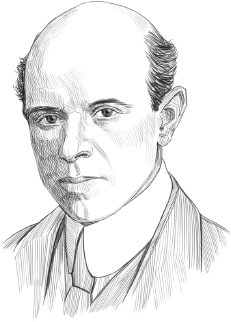
I had two loves in my life – music and Catalonia, the place where I was born. Music was always with me, but I had to leave Catalonia because of war. I was never able to return. So my life is a story of happiness and sadness.

I was born on 29th December 1876 in El Vendrell in Catalonia into a proud Catalan family. Although my mother was born in Puerto Rico, her parents were Catalan too. Let me explain. Catalonia is the north-east region of Spain, with Barcelona as its regional capital. The Catalan people are very independent, and they have their own language and culture. Although they are part of Spain, many of them would like Catalonia to be an independent country.
My family was very musical, and music was always my first language. My father played and sang music in our local church, and he often took me with him. He gave me lessons, too, and by the age of four I could play the piano. Father was a good teacher. I gave my first public performance on the violin when I was six. It was not a completely happy experience, however, as a group of boys laughed at me because I played with my eyes closed.
Some travelling musicians visited El Vendrell one year, and they played some wonderful music. Among their instruments was a cello, which I had never heard before. Although I was only 11 I decided then that the cello was the instrument for me. Now I needed a cello teacher, so my mother took me to the Escola Municipal de Música in Barcelona, about 70 kilometres north of El Vendrell. I studied hard, and in my free time after school and at weekends, I searched the city’s music shops for interesting music. I discovered a copy of ‘Six Suites for Solo Cello’ by J.S. Bach, which was like finding six bars of gold! Every day, I studied the music and played a little bit more, although I did not play Bach’s Suites in public until 13 years later.
There was no television at that time, or even radio. If people wanted to hear music, they had to go to a concert hall or a café. I played in cafés every evening, sometimes popular music and sometimes classical, and it was a very important part of my musical education. I earned money, too, which I used to pay for my teaching.
Five years later, I completed my studies at the Escola Municipal in Barcelona, but I didn’t know what kind of job I could get. I continued to play in cafés, and one day a man spoke to me. He told me he had enjoyed my playing very much, and then he introduced himself. He was Isaac Albéniz, a very famous pianist and composer at the time. As he was leaving the café, he gave me a note and told me to take it to the royal palace. The palace was the home of the Queen Maria Cristina, widow of King Alfonso and mother of the future king, who was then only eight years old.
I thought he was joking, but in fact I was invited to play for Queen Maria Cristina, and she loved my music. The letter also introduced me to Count Morphy, who took an interest in my education and taught me art, philosophy and maths. With help from the Queen and the Count, I was able to study composition at the Real Conservatorio de Música y Declamación. I played there with the Quartet Society. That was my first proper job as a musician.

I loved playing at the palace, but I knew that I had to go abroad to have a successful career in music. I needed to meet other musicians and conductors, and play with orchestras in different cities. I moved to Paris with my mother. We had very little money, but in 1895, I found a job playing in an orchestra in a musical theatre. I had to learn French quickly. Then an offer came from Barcelona, from the Gran Teatre del Liceu. They were looking for a cellist, and I was happy to return to my home city. I did not stay long, however. The following year I joined the Madrid Symphony Orchestra, and I played solo for Queen Maria Cristina.
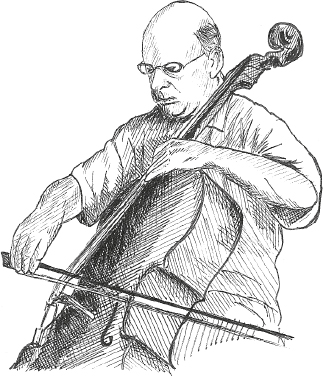
I developed my own style of playing, which was unlike the style of most other cellists at that time. I tried to express my emotions through the cello. People seemed to like my new style, and I was becoming known outside Spain. I was invited to England, where I played a public concert in London and a private concert for Queen Victoria, at her summer palace on the Isle of Wight. I had invitations to play in Holland, the United States and South America. In 1904, I performed for Theodore Roosevelt, the President of the United States, at the White House in Washington DC.
While I was in America, I was asked to play the piano for an opera singer, called Susan Metcalfe. We soon fell in love, but we had very little time together. We were both performers, and our concerts took us to opposite sides of the world. Because there was no time for a private life together, our relationship sadly seemed to have no future.
Two years later, in 1906, I met a young Portuguese cellist and fell in love again. Her name was Guilhermina Suggia, and she became my student. We had six wonderful musical years together, but slowly our lives began to go separate ways. Not long after my relationship with Guilhermina ended, Susan Metcalfe appeared at my dressing-room door after a performance in Berlin one evening. Susan and I fell in love all over again, and this time we married.
It was 1914, and the First World War started in Europe. The German army were in France and there were terrible battles all over Europe. Susan and I left for the United States. As the war continued, Susan and I played many concerts together in the United States. We loved each other, but we had many arguments.
After the war, our work took us abroad again. I set up the Pablo Casals Orchestra in Barcelona in 1919, and in Paris I formed a musical group with Jacques Thibaud, who played the violin, and Alfred Cortot, who played the piano. The three of us played concerts and made recordings until 1937.
Now Susan and I lived more often in Europe, but she felt that she did not belong among my Catalan friends. She wanted to be in the United States and I wanted to stay in Spain, so we began to spend more time apart. Our marriage ended in 1928.

In 1936, disaster came to Spain. General Franco led an army into Spain from Africa to take control of the government. A terrible civil war followed, and it lasted until 1939, when Franco became Spain’s ruler. I had to shut down my Catalan orchestra and leave my home country. I moved to Prades in southern France, very near to the border with Spain.
Although war in Spain ended in the summer of 1939, another World War was just beginning in the rest of Europe. People in Europe now had to live with the sound of bombs, not music. I refused to play in any country that supported General Franco, or that was controlled by Hitler. I played only a few times during the war in free parts of France, and in Switzerland.
In 1950, five years after the end of the Second World War, I was persuaded to organize a music festival in Prades. It was 200 years since the death of J.S. Bach, and I was well known for playing Bach’s cello works. I agreed, as long as the money from the tickets was sent to a hospital in the nearby town of Perpignan. Many excellent musicians came to Prades to play, and the festival was held every year after that. My music career had started again.
A young violinist from my mother’s home country of Puerto Rico came to the festival in 1952. Her name was Marta Montáñez Martínez, and I was very impressed with her talent. I advised her to study in New York City, with teachers that I knew.
I was now busy with concerts and teaching in different cities, but my personal life was lonely. I had been friends for many years with Francesca Vidal de Capdevila, and I asked her to marry me. Sadly, she died a few months after our wedding, and I was alone again. I worked harder so that I did not have time to feel sad.
In 1956, when I was nearly 80 years old, I was invited to perform at the Casals Festival in Puerto Rico. Some of my mother’s family still lived there, and I visited them. I also met Marta Montáñez again, who was now 19. We shared our love of music, and I became young again in her company. Many people did not approve of our relationship, but I asked her to marry me anyway. She agreed, and we were married for the next 16 years.
I lived in San Juan in Puerto Rico for the rest of my life, organizing the Puerto Rican Symphony Orchestra, and helping to set up the Puerto Rican Conservatory of Music. I was able to pass on the great history of Spanish music to new young musicians. The mix of Spanish and Puerto Rican music produced wonderful new styles, such as the salsa, bomba and plena sounds.
I continued to travel and give masterclasses in cities in the Americas and Europe. In 1961, I played again for the President of the United States, who at this time was John F. Kennedy. I was 85, and I was very pleased to play in the White House a second time, especially as the performance was recorded for radio and television.
I was invited to write a piece of music for the United Nations. It was first performed at the General Assembly in 1971, and I was the conductor. I was 95 years old! The UN awarded me their Peace Medal, and I spoke about my country. I told them I was Catalan, and that the world’s first democratic parliament met in Catalonia. In my speech, I attacked Franco and his men, who had taken Spain’s rights away.
Franco was still in control of Spain, and sadly he lived two years longer than me. Two years after my UN performance, in 1973, I died of old age at home in Puerto Rico. I did not live to see Spain become free again. I was very sad that war had driven me from the land of my birth. But I was very happy, and lucky, because I had loved and played music for more than 90 years.
The Life of Pablo Casals
1876 Pau (Pablo) Casals i Defilló was born in El Vendrell, Catalonia, Spain, on 29th December 1876. He was the second of eleven children. 1881 Aged five, Pablo joined a church choir. He had already learnt to play the piano, and soon he could also play the violin. 1888 He became a cello student at the Escola Municipal de Música in Barcelona, Spain. He was an excellent student. 1893 He moved to Madrid, where he entered the Real Conservatorio de Música y Declamación. He played in the Quartet Society, and gave concerts for the Queen Regent, Maria Cristina. 1895 He moved to Paris. He earned a living playing the cello in an orchestra in a musical theatre. 1896 Returning to Catalonia, he became a teacher at his old school, the Escola Municipal de Música in Barcelona. He also performed in the orchestra of the Gran Teatre del Liceu. 1897 Pablo performed with the Madrid Symphony Orchestra. He received a high honour – the Order of Carlos III – from Queen Maria Cristina. 1899 He visited England, where he played a public concert at London’s Crystal Palace, and a private concert for Queen Victoria at her summer palace on the Isle of Wight. Later in the year, he made appeared at the Lamoureux Concerts in Paris. The audience loved him. 1900 A concert tour of Spain and Holland with the pianist Harold Bauer was a big success. 1901 Pablo crossed the Atlantic for the first time, and played concerts in the United States and South America. 1904 He played for the first time at Carnegie Hall in New York City, and then played for President Theodore Roosevelt at the White House in Washington DC. 1914 In the year that war broke out in Europe, Pablo married the American singer Susan Metcalfe. 1919 Pablo set up an orchestra in his home city of Barcelona, calling it Orquesta Pau Casals. It gave its first concert the following year. 1928 After 14 years Pablo and Susan decided to end their marriage. 1936 General Franco led the Army of Africa into Spain, taking control of Spain’s government. The Spanish Civil War started, lasting until 1939. Pablo hated Franco, and decided to shut down the Orquesta Pau Casals and leave Spain until democracy returned. He moved to France. Franco said he must never return to Spain. He never did. 1939–1942 Pablo moved to Prades, in southern France, near to the Spanish border. He performed at different places in southern France and Switzerland. 1945 After the war, he felt that Britain and the USA had abandoned Spain. They were too friendly to Franco. Pablo stopped performing. 1950 He started conducting and playing the cello again, performing at the Prades Festival. It was organized to celebrate two hundred years since the death of J. S. Bach. Pablo continued to lead the Prades Festivals until 1966. 1955 Pablo married his good friend, Francesca Vidal de Capdevila. Sadly, she died in the same year. 1956 Pablo moved to San Juan in Puerto Rico. 1957 Pablo married his pupil, Marta Montáñez Martínez. 1958 He started an orchestra – the Puerto Rico Symphony Orchestra – and, a year later, a music school, the Conservatory of Music of Puerto Rico. 1961 Pablo performed at the White House again, this time for President John F. Kennedy, who he admired. 1963 President Kennedy awarded Pablo the US Presidential Medal of Freedom. 1971 Approaching the great age of 95, Pablo performed his Himno a las Naciones Unidas (Hymn of the United Nations) at the General Assembly in New York City. He was awarded the United Nations Peace Medal. 1973 Pablo Casals died, aged 96, at home in San Juan, Puerto Rico.Louis Armstrong

1901–1971
the American trumpet-player and singer
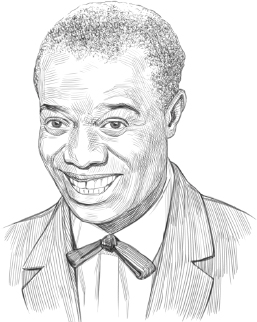
I was not born into a wonderful world. I grew up in a poor area of New Orleans, where life was tough for young African-American boys. But music saved me, and showed me that the world really was wonderful.

I was born in 1901 in New Orleans, Louisiana, in the Deep South of the United States. Two years later, soon after my little sister was born, my father left the family. My mother didn’t want to look after us on her own, so my sister and I went to live with Grandma Josephine. Although we had no toys, no shoes and very little food, my grandmother always sent us to school and to church.
When I was five, my mother returned and we lived with her. It wasn’t a real home though, and I was often on the streets. I needed to earn money to buy food for my mother and sister, so I found a job delivering newspapers. But I started getting into trouble too. New Orleans was a tough city, and you had to join a street gang to survive. One of my jobs as a young member of the gang was to take messages, while another person was watching for enemy gangs outside clubs. I liked standing outside the clubs, because I could hear the music inside. Ragtime music was very popular then.
I found a job with a Jewish family from Russia. Their name was Karnofsky, and they used to buy and sell old furniture and other household things on the streets. Mr Karnofsky was very kind to me, and often invited me to stay in their house. Later, he also lent me enough money to buy a cornet, which is a kind of trumpet. He taught me how to live – to expect the best from people and myself, and to work hard.
I left school when I was 11 and joined a singing group of four boys. We earned a few dollars, singing the latest songs on street corners, and people seemed to like my voice. The other boys called me ‘Satchel Mouth’ because I had such a wide open mouth (a ‘satchel’ is a kind of school bag with a wide opening). Also, I learned to play some simple songs because some of the musicians in the clubs were kind to me and gave me music lessons.
Because of the area where I lived, I was often in trouble with the police. One New Year’s Eve, when I was 11, I fired a gun into the air in the street. The police caught me, and sent me to the New Orleans Home for Colored Waifs, a home for young African-American boys who had been in trouble with the police. It was really a prison for children. I lived there for 18 months.




